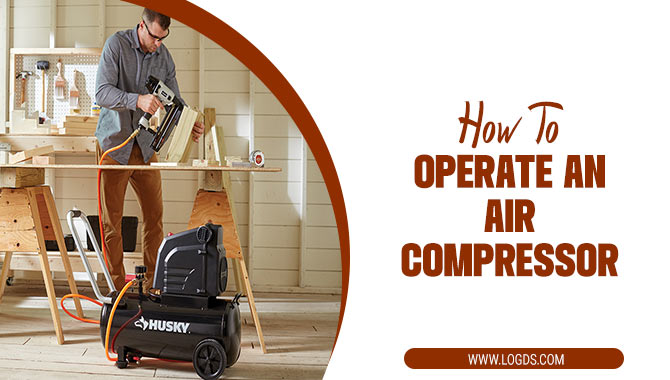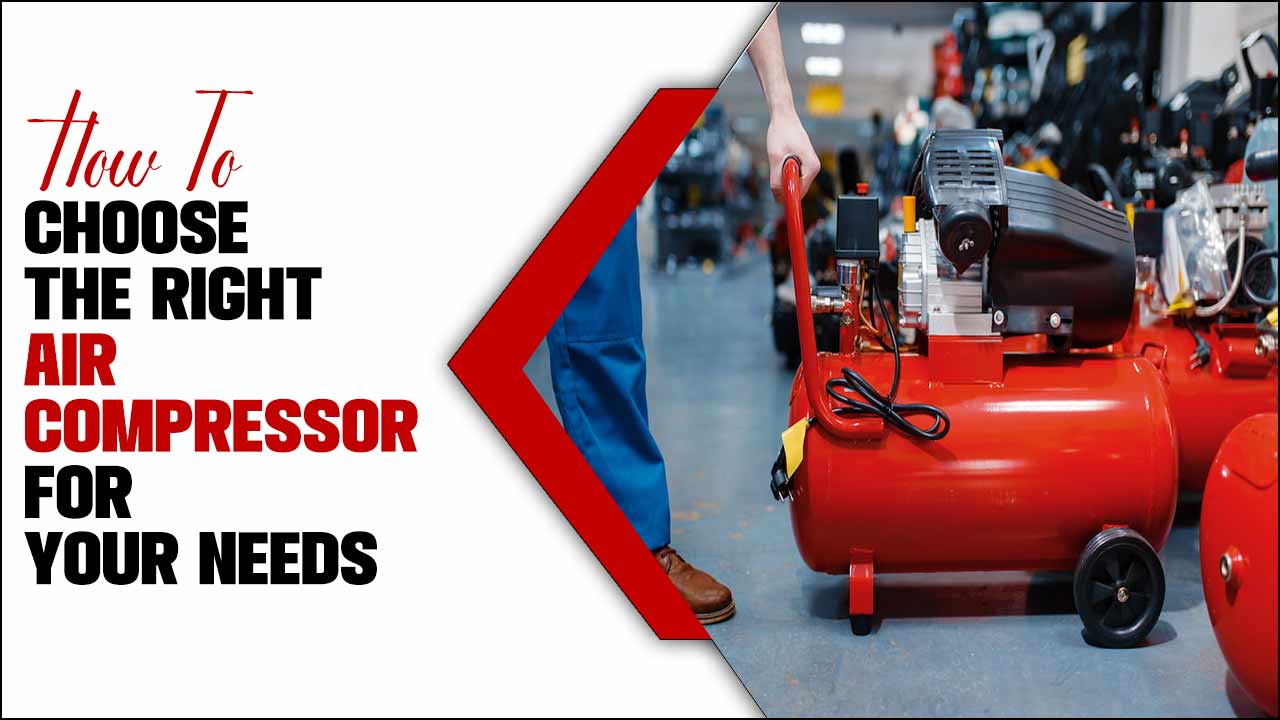In today’s fast-paced world, having a reliable means of transportation is essential. Here are give a few steps by step guidelines on How to inflate tires with an air compressor.
Whether you’re driving a car, truck, or bike, maintaining your vehicle’s tires is crucial for safety and comfort on the road. One of the most straightforward tire maintenance tips is to keep your tires properly inflated.
However, many people find this task daunting, especially when using an air compressor. This blog post walks you through inflating your tires with an air compressor. We’ll cover everything from choosing the right air compressor, selecting the appropriate nozzle, setting the right pressure level, and more.
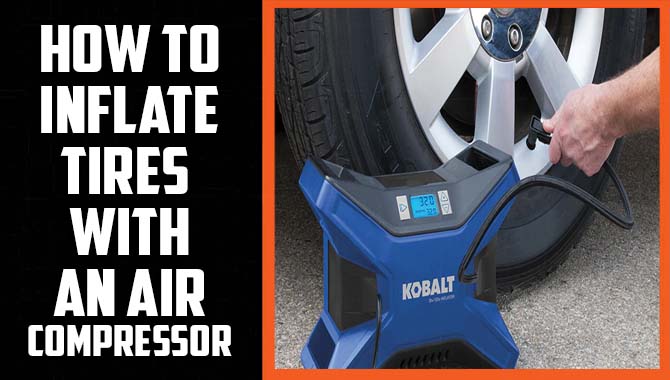
What Are Inflate Tires
Inflating tires is adding air to the tires to bring them to the recommended pressure level. The recommende pressure level for tires found in the owner’s manual or on a sticker inside the driver’s side door. Maintaining the correct tire pressure is important as it can improve fuel efficiency, extend the life of the tires, and ensure proper vehicle handling.
Overinflated tires can cause problems such as reduced traction and premature wear on the centre of the tread, while underinflated tires can lead to sidewall damage and increased rolling resistance.
In addition, low tire pressure can cause the tire to overheat, leading to a blowout while driving. Therefore, checking tire pressure regularly and inflating it as needed is essential. A tire pressure gauge use to check the pressure, and an air compressor or a gas station air pump can inflate the tires.
Tools For Inflating Tires With An Air Compressor
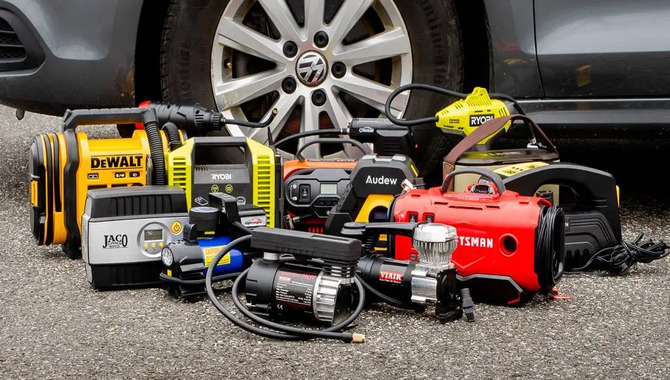
The right tools for inflating tires can make a big difference in your vehicle’s maintenance. With the help of an air compressor, you can easily fill up tires quickly and efficiently. You will need the right tools for inflating tires to make the most of your air compressor. Here are some tools How for inflating tires
Tire Chuck: A tire chuck is a tool that attaches to the air hose and connects to the tire valve stem. It allows you to control the airflow and monitor tire pressure while inflating.
Air Compressor: An air compressor is the primary tool to generate pressurized air. It supplies the air required to inflate the tires.
Air Hose: The air hose connects the air compressor to the tire chuck. It transfers the pressurized air from the compressor to the tire.
Tire Inflator Gauge: This tool combines an air pressure gauge with a tire chuck, allowing you to measure tire pressure and inflate the tires simultaneously.
Pressure Gauge: A separate pressure gauge is used to check the tire pressure before and after inflation. It provides an accurate reading of the tire pressure.
Inflation Gun: An inflation gun is similar to a tire chuck but usually includes a trigger mechanism for precise airflow control.
Blow Gun: A blow gun attachment is handy for cleaning dust and debris from the tire valve stem before inflating. It helps ensure a proper seal between the chuck and the valve stem.
Tire Valve Core Tool: The tire valve core sometimes needs to be replaced or adjusted. This tool allows you to remove or install the valve core easily.
Airline Lubricator: An airline lubricator can be connected to the air hose to lubricate the airflow, reducing friction and extending the life of the tools.
Inflate Tires With An Air Compressor – Step By Step
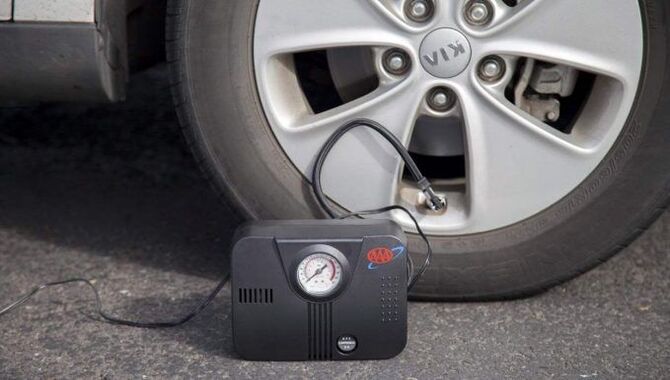
Maintaining the proper air pressure in your vehicle’s tires can improve gas mileage, tire longevity and ensure a safe ride. Here are some step-by-step tips on inflating tires with an air compressor. If you have an air compressor, inflating your tires is a relatively simple process that you can do yourself.
Park Your Vehicle In A Safe And Level Area
Regarding parking your vehicle, safety should always be your top priority. Finding a safe and level area to park your car is important to prevent any accidents or damage. One of the first things to consider when parking your car is the surface you’ll be parking on. A level surface is the best option, as this will prevent your car from rolling or slipping, especially if you’re parking on an incline.
If the ground is uneven or sloped, try to find a spot where your car will be as level as possible. Once you have found a suitable spot, apply your parking brake and turn off the engine. If parking on a hill, turn your front wheels towards the curb to prevent your car from rolling downhill. Additionally, if you’re parked on the side of the road, turn on your hazard lights to alert other drivers.
Locate The Recommended Tire Pressure
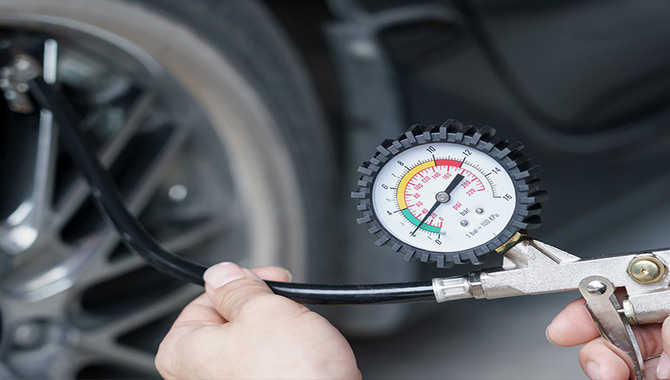
When maintaining your vehicle, knowing the recommended tire pressure is essential. This information is typically found in your owner’s manual or a sticker inside the driver’s side door.
It’s important to note that the recommended tire pressure may vary depending on the make and model of your vehicle and the type of tires you have installed. It’s recommended to check your tire pressure at least once a month, as tires can lose pressure over time. In addition, extreme temperatures can also affect tire pressure.
If your tires are overinflated or underinflated, it can cause uneven wear and tear, affect your vehicle’s handling, and even lead to a blowout. By regularly checking and maintaining the recommended tire pressure, you can help ensure your safety on the road, save money on fuel costs by improving your vehicle’s fuel efficiency, and increase the lifespan of your tires.
Prepare The Air Compressor
When using an air compressor, preparing it properly before use is always important. You must ensure it is in good working condition and has enough air pressure to operate effectively. One of the first steps in preparing an air compressor is to check the oil level and top it up if necessary.
This will help ensure the compressor operates smoothly and efficiently by reducing friction and heat. You should also check the air filter and clean or replace it if it is dirty. This will help ensure the compressor can draw in air efficiently and prevent dust and debris from entering the machine.
Additionally, ensure the air compressor is properly grounded, and all the connections are tight and secure. This will help prevent electrical shocks and ensure the compressor operates safely.
Attach The Air Hose To The Air Compressor

To use an air compressor, you need to know how to attach the air hose to it. First, locate the air compressor and make sure it is off. Then, inspect the air hose for any cracks or damage.
Once you’re sure the hose is in good condition, find the connection point on the compressor where the hose will attach. There should be a valve or fitting to secure the hose. Make sure that the valve is closed before attaching the hose.
If the valve is open, air will escape, and you won’t be able to build up pressure. Next, insert the end of the hose into the valve and twist it clockwise until it is secure. You should feel a slight resistance as the hose locks into place. Finally, turn on the compressor and ensure the pressure gauge shows increased pressure.
Set The Pressure
When dealing with machinery and equipment that involves pressure, it is crucial to set the pressure correctly. This is because the pressure determines the force and energy the equipment will exert.
Setting the pressure too low could result in ineffective performance while setting it too high could lead to the equipment malfunctioning or even causing damage. Therefore, before operating any equipment, it is essential to read the manufacturer’s instructions and understand the recommended pressure range.
It is also essential to have a pressure gauge to measure the pressure accurately. When setting the pressure. One should ensure the equipment is turne off and depressurized to avoid accidents. Once the pressure is set, the equipment turns on and is tested to see if it functions correctly. Regularly checking and adjusting the pressure is also necessary to ensure the equipment performs optimally.
Check The Pressure
It is important to regularly check the pressure of your tires to ensure safe and efficient driving. Low tire pressure can lead to decreased fuel efficiency and increased wear and tear on your tires, while overinflated tires can result in a harsh and bumpy ride.
First, locate your vehicle’s recommended tire pressure in the owner’s manual or the driver’s side door jamb to check the pressure. Then, use a tire pressure gauge to measure the pressure of each tire while they are cold, meaning before driving or after the vehicle has been stationary for at least an hour.
If the pressure is lower than recommended, use an air compressor to add air to the tire until it reaches the proper pressure. If the pressure is too high, release air from the tire until it reaches the recommended level. It is also important to visually inspect the tires for any signs of damage or excessive wear, such as bulges, cracks, or worn tread.
Repeat The Process For Each Tire

When checking the air pressure on your car’s tires, it’s important to repeat the process for each tire. Start by removing the valve cap and attaching the tire pressure gauge to the valve stem. Press down firmly until you hear a hissing sound, then let go and read the pressure on the gauge.
If the pressure is too low, use an air compressor to inflate the tire to the recommended level. Then, repeat the process for the next tire. It’s essential to check all four tires since they may have different pressure levels due to various factors, such as temperature changes and uneven driving surfaces.
Neglecting to check one or more tires can lead to poor handling, decreased fuel efficiency, and even flat tires. Additionally, it’s a good idea to check your tire pressure at least once a month and before long trips to ensure the safety and longevity of your tires.
What To Do If Your Tires Have Very Low Pressure
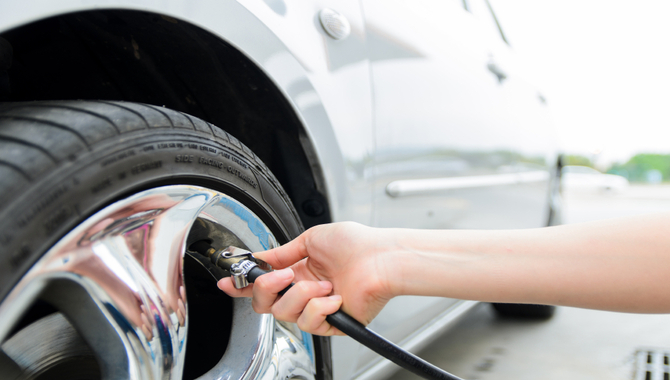
If your tires have external pressure, taking action quickly is essential to prevent further damage. The first step is to check the pressure level of each tire using a tire pressure gauge. If the pressure is significantly lower than recommended, you may need to add air to the tires.
You can do this at a gas station or with your air compressor. It’s important to note that if your tires consistently lose pressure, a larger issue, such as a puncture or leak, may be at play.
In this case, taking your vehicle to a trusted mechanic for inspection and repair is best. If you need to add air to your tires, refer to your vehicle’s manual for the recommended pressure levels. Overinflating your tires can be as dangerous as underinflating them, so following the guidelines is essential.
Conclusion
Inflating tires with an air compressor is a critical aspect of vehicle maintenance that can significantly prolong the lifespan of your tires and improve your safety on the road. We have already given you How to inflate tires with an air compressor.
How to inflate tires with an air compressor by Following the guidelines in this blog post. Following the essential guide outlined in this blog post, you can easily and safely inflate your tires, ensuring they are at the recommended pressure levels.
Always check the recommended PSI for your vehicle and tire type, use the appropriate attachment and gauge, and carefully monitor the inflation process. With these steps in mind, you can confidently maintain your tires and vehicle, reducing the risk of accidents and improving your driving experience.
FAQs:
1.How Long Will My Tires Take To Inflate?
Ans: The time it takes to inflate your tires depends on the size of your tires, the type of air compressor being used, and the current pressure of your tires. On average, it can take anywhere from 3-5 minutes to inflate a single
2.Can You Use An Air Compressor To Inflate Car Tires? I
Ans: Yes, an air compressor can be used to inflate car tires. However, it is important to ensure that the air compressor is rated for the correct pressure needed for the car tires and not to overinflate them.
3.Can I Use Inflated Tires With An Air Compressor?
Ans: No, you cannot use an air compressor to inflate already-inflated tires. Overinflating tires can be dangerous and may cause the tire to burst. It is important always to check the recommended tire pressure for your vehicle and use a tire pressure gauge to
4.What Is The Proper PSI For Inflating Tires With An Air Compressor?
Ans: The proper PSI for inflating tires with an air compressor depends on the recommended tire pressure for the specific vehicle.
5.How Often Should I Check And Adjust The Tire Pressure In My Vehicle?
Ans: It is recommended to check and adjust the tire pressure in your vehicle every month or before a long trip.



